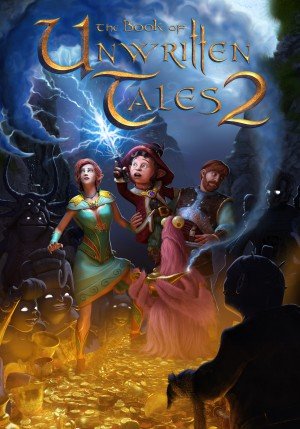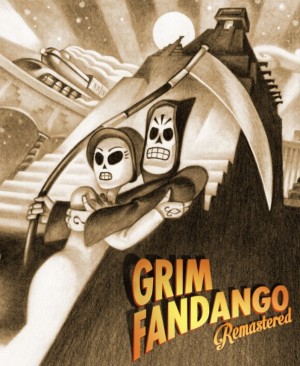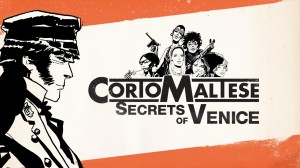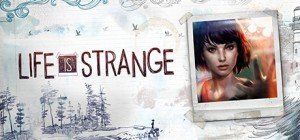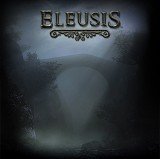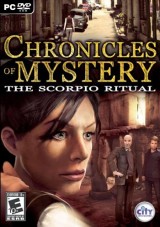Review for The Book of Unwritten Tales 2

Game information
Adventure Gamers Awards
The sequel to 2011’s surprise hit fantasy adventure had some very large shoes to fill – or more precisely, four large shoes, a couple of small ones, and some pink, foot-shaped fur. Fortunately, German developer KING Art Games has proven largely up to the task. The Book of Unwritten Tales 2, developed over three years with the help of a little crowdfunding, is a massive, impressive effort that returns the original quartet of Wilbur the gnome mage, Ivo the elven princess, Nate the human adventurer, and his pet, the mini-walking carpet Critter, to the tiny town of Seastone for a fresh adventure that clocks about thirty hours of gameplay. Told over five chapters spanning locations as diverse as an airborne pirate city, the spooky Dark Woods, and the lost desert city of Lorem Ipsum, the second tale boasts the fantastic art, animation and voice acting that have become a hallmark of the series. It doesn’t quite match up to the original in terms of its depth of story, cleverness of script, or character development, but since the ambitious aim was clearly to exceed excellence, falling a little short still produces a very enjoyable adventure with brilliant production values and a whole lot of heart.
We pick up the story some years after the deadly battle between the good folks of Avantasia and Arch Witch Mortroga’s Army of the Shadows for control of the Artefact of Divine Fate. With the hyper-magical artefact finally stowed away in a secret location (though not before it has altered reality in some intriguing ways), an uneasy peace has been cobbled together across the realm. The game is set afoot by Nate falling, literally, through the sky, his only hope the most insecure genie ever. It is remarkable how much the years between the two tales have aged Nate: now a heavyset, bearded gent with a very peculiar gait, he is more reminiscent of Captain Haddock than Captain Solo. Then we meet another Nate – or rather N8, a WALL-E-esque robot fixing an intricate mechanical castle in a visually charming gameplay tutorial, before being whisked to the verdant kingdom of Elfburrow, where elven Princess Ivo is feeling maudlin and under the weather. Soon there is an astonishing revelation: she has somehow had an immaculate conception. Outraged, she jets off to Seastone to demand an explanation from Arch Mage Alastair. Meanwhile, winsome Wilbur has been having a tough time as the first gnome professor of the Mage School. Tired of being trolled by his awful students, he tries some fancy magic to awe them, but things go horribly wrong and the situation is hijacked by an enfant terrible who promptly turns the Arch Mage into a frog, then sets about painting the town pink, festooning it with hideous candy-coloured flowers and toys until Seastone looks like the aftermath of an apocalypse in the land of Barbie.
There is little similarity in the premises of the first and second Books beyond the hijinks of obnoxious children and their enabler mommies: where once we endured the delusions of grandeur of Munkus the megalomaniac, we now have the churlish Chantal throwing petty tantrums while hosting kiddie tea parties. But unlike the ferocious Mortroga, who led the Shadow Army to the bloody siege of Avantasia, Chantal’s mother is a newbie politician trying to rig a spot on the Seastone Town Council, aided by the racist headmaster of the school. The fallout of the bitter war with Mortroga is summed up in a couple of expositions, and while the plot does rope in Munkus for another attempt at world domination, his abbreviated role feels tacked on only to maintain some degree of continuity between the two tales. The lowered stakes, particularly the lack of an imminent world-ending crisis, waters down the urgency of the proceedings. The lighthearted pop culture tributes and geeky humour of the first game have also been toned down, replaced by extensive tongue-in-cheek commentary on issues like race- and gender-based discrimination, politically-motivated activism, personal freedom, and insidious day-to-day corruption.
Though most of the characters lack the chutzpah that was the defining element of the first game, they still form the core of the sequel’s story, which is built upon their aspirations and apprehensions. Wilbur, once more, is the heart and soul of the adventure, an ideal balance of goodness, courage and competence. He confronts each challenge, no matter how twisted, with sense and sincerity. Though often defeated by shrewder, stronger opponents, he always bounces back by taking good advice when offered and keeping his focus on the endgame. Ivo, though heavily pregnant for most of the game, keeps a cool head despite being pitched from one aggravating situation to another (including some altercations with Nate and her crazy food cravings), and her prudence is a great source of support for Wilbur. Critter does his bit in a couple of dire situations, but is rather subdued this time. Nate, on the other hand, has morphed into an even more narcissistic, whiny, irresponsible man-child, and his drunken shenanigans and juvenile sulking are more often than not a liability to the crew. His on-off affair with Ivo, most of which apparently transpired in the interim between games, is awkward and unconvincing on-screen.
Arch Mage Alastair and Rémi, the King of the Rats, set commendable benchmarks for heroics, but the bipolar two-headed ogre Zloff-Blout and lovey-dovey zombie duo Gulliver and Esther also play key roles in the success of the mini-rebellion. While the pizzazz of Ma’Zaz is sorely missed (we get a gnome bounty hunter instead), the mummy returns to prove that he was indeed destined for greater things, and provides some much-needed laughs with his inimitable drawl and bouts of insta-amnesia. This time we meet Ivo’s parents, the elven King and Queen – he a doped out New-Age hipster; she a control freak who micromanages Ivo’s life with the same ruthless efficiency with which she runs the kingdom. Then there is Ethel, the cantankerous cook of the rats who enlivens the dreary Underground with her huge emotional range. Bloch, the unfriendly administrator of the Mage School; Tim, a paranoid shopkeeper; lovelorn bachelor Count Vladi and his mail-order bride Kiki; and a passive-aggressive troll are some of the other characters added to the cast, but none rise beyond the limits of their roles. The shrill Chantal and her devious mother lack true evil aggression, and irritate rather than intimidate.
As in Book One, the point-and-click mechanics here are very streamlined: clicking any part of the screen moves the protagonist there, and clicking hotspots interacts with them. Each scene has many hotspots, some useable and some just to create ambience. Objects are described in great detail, and several can be dismantled into components to be used with on-screen counterparts or with each other in the inventory – which appears as a rucksack at the base of the screen and must be clicked to open and shut each time. Needless hotspots are deactivated once exhausted and used items are discarded from the inventory which, along with the intelligent cursor that allows only correct or likely item matches, all but eliminates random clicking. The spacebar reveals all hotspots and double-clicking exits allows you to leave an area instantly. Chapters which involve extensive commuting – sometimes between continents – are equipped with maps that allow teleportation. Some screens scroll when the protagonist is moved, but as there is no indication which screens are scrollable, this may cause players to get stuck if they do not explore the edges of all of them.
Progress is broadly linear, though at any time there might be two or three active mini-quests. Some segments allow tandem play between two or even three characters, which is always interesting. There are no in-game hints or a diary to keep track of the protagonists’ to-dos, but the literally hundreds of objectives flow logically from one to the next in an organic progression that makes them feel easy, though many require multiple steps and items to solve. The puzzles usually involve collecting and using inventory objects to bypass obstacles, repair items and devise contraptions. Tasks range from making potato chips to building golems and saving a town from its fears, and while they are not unduly whacky, most include clever little twists to make them engaging. There are quite a few standalone puzzles too, some of which are well-structured, like mixing a special drink or a set of dangerous chemicals, while some rely entirely on trial-and-error, like the lengthy process required to run a factory machine. The game steers clear of dexterity-driven activities after the much-maligned rain dance sequence of Book One, but does include a music-based puzzle that requires a good ear. Each successful quest is signed off with a musical flourish, and there are many achievements for clearing preset milestones.
The writing has smart but simple sentences that capture the nuances of colloquial conversations. In some places the native German words still persist and on occasion voice-overs do not match the subtitles, but overall the localisation has efficiently captured the essence of the script. As before, object descriptions change depending on the mood of the observer, and many items from Book One feature as mementoes in this episode, like the RPG machine which has been converted into a fireplace at the pub. Playful jibes are taken at the adventure and role-playing genres as pet peeves, like how even the simplest missions are made insanely complicated and the outrageously miniscule armour worn by lady warriors, but this time the dialogues focus more on current sociopolitical matters. Wrapped in a thin veil of comedy, these cover serious issues like the rampant patent litigations by technology companies, the scourge of paid media, the dirty business of politics and electioneering, animal testing, and the incessant debate on socialism versus capitalism. There is some sermonising about the benefits of constructive activities like reading the classics, but balance is maintained by including a fair amount of asininity, like the barrage of fat jokes at Ivo’s expense. And then there are the metaphysical questions that will surely make you go hmm… like, why do noses run and feet smell? Or, if you succeed at failing, have you not failed?
The script is buoyed, once more, by absolutely top-notch voice acting. Super-talented Nicholas Aaron reprises his role as Wilbur Weathervane and is singularly awesome as the sensitive, articulate gnome, eliciting his entire gamut of emotions, from exultation to indecision, with the subtlest of intonations. He is ably supported by Jess Robinson, who returns as the elegant and confident – but easily agitated – Ivo, and shows off her range by also voicing crazy, screechy Chantal. Doug Cockle plays the whiny Nate with understated angst this time, and makes the character almost bearable. N8’s cute beeps and toots, Cheep-Cheep’s tweets and Critter’s alien lingo are also done just right. Most of the guest cast is also excellent, in particular Rémi with his French accent; Arbor, the bonsai gardener of the elves; Ethel the cook; the argumentative Old Gods, and my all-time favourite, the mischievous, moth-eaten mummy – though his role is truncated by Ivo simply refusing to talk with him ever again.
Equally exemplary are the gorgeous, high-resolution screens, especially at the ‘Ultra’ setting. The backgrounds, particularly the darker ones like Seastone at night or the abandoned village of Dark Woods, are enriched with striking colour contrasts and delicate plays of light and shadow. The elven gardens are resplendent with the warm hues of autumn, the Red Pirate’s palace is a glorious example of brazen decadence, and special locations like the rats’ den, where household items appear supersized to the denizens, are wondrous in their own way. There are some beautifully illustrated books and maps as well. Some scenes, like Wilbur’s room, are explored from a top-down perspective, and subtle zooms and pans of the camera are used to intensify interactions or leave you breathless with vibrant, wide-angle landscapes. An outstanding graphics-based segment of Wilbur travelling back in time deserves special mention, and must be seen to be fully appreciated. The tacky pink decorations that Chantal foists on the town cheapen many of the scenes, and though that is the intended outcome, it is nonetheless distressing.
The ambient animation and lifelike character models are also excellent. Lip-sync is perfect; characters move believably and interact visibly with on-screen objects with realistic expressions, like Ivo squishing up her face while drinking a vile potion, or the uncertainty in Ethel’s eyes when confronted with a potentially fatal task. Despite some minor glitches, there are numerous impressive moments of character animation, like Wilbur’s first encounter with N8 the robot, Ivo climbing steps with increasing awkwardness as her belly expands, and Critter tricking the Red Pirate’s monkey into making drinks. Background animation keeps up, with full-fledged reflections in mirrors, scarab beetles scurrying noisily across a pyramid floor, and little touches like a match extinguishing with a puff of smoke as a key character descends into a creepy hole, filling you with real dread.
Supplementing the art is the grand yet atmospheric background score, which was recorded live with the City of Prague Philharmonic Orchestra and features over sixty minutes of music that includes the now-familiar series theme. Care is taken to ensure that the soundtrack does not overwhelm either the voice acting or the in-game sound effects, and the three work cooperatively to provide a powerful aural experience. There are many ambient sounds like rustling leaves, flowing water and the distant howling of wolves, but a lot of the realism comes from judicious use of effects such as footsteps on different surfaces, voices echoing in caverns, the slowing chug of a machine as it comes to a halt, the staccato thump of a water wheel, and the creepy whispering of gossipy books in a magical library.
Though the game allows unlimited saves and also maintains an autosave file, it only lets you load the latest ten saved games, which is inconvenient given the sheer length of the adventure and some bugginess. My game froze up during certain activities and crashed each time I quit the game. More crucially, I also encountered a game-breaking bug in a coal mine that could only be bypassed by using someone else's saved game after that point.
The Book of Unwritten Tales 2 is yet another true-blue classic adventure, a rare treat in this era. It not only sticks to the traditional point-and-click gameplay of its predecessor, it also attempts to resurrect the innocence of a bygone time when heroes were real, adventures were epic, and PG-rated entertainment was not summarily dismissed as childish. KING Art has gone many extra miles to set up an eminently playable game with over thirty hours of non-stop, cohesive quests, an intelligent script, and absolutely superlative production quality that leaves you wanting more. Book Two faced an uphill task competing with its illustrious predecessor, and in my opinion falls just a little short when comparing the depths of the two stories and the memorability of the characters, both recurring and new. It is also hobbled by glitches in its current state, with many minor bugs and at least one terrible game-breaking one. Hopefully these crimps will be smoothed out soon and players will be able to evaluate the game purely on its merits. The cliffhanger ending of this episode augurs well for a third Book, and hopefully that tale is being written even as we make our way through this one.




